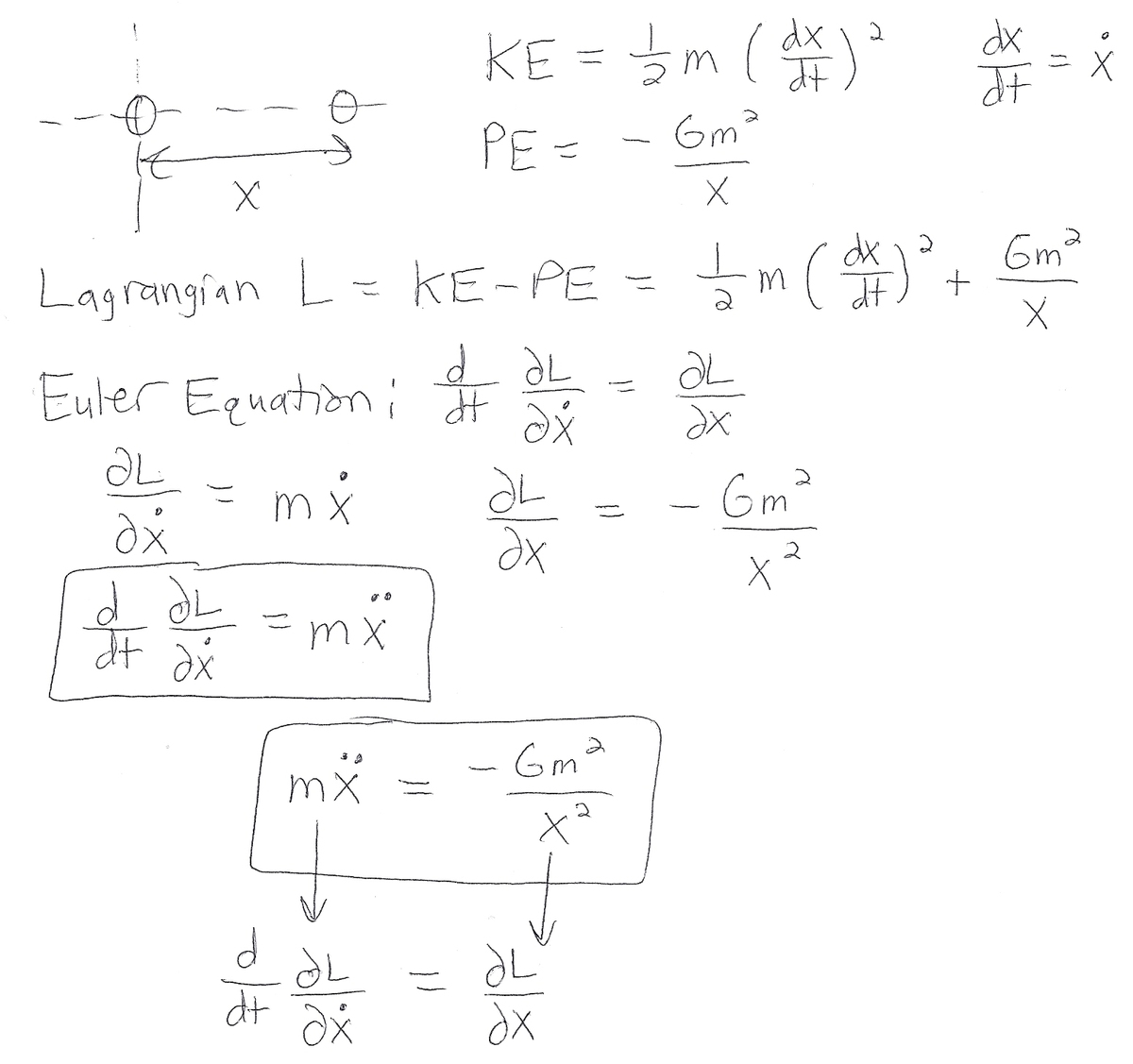1-D Lagrangian Mechanics
Consider a simple 1-D system consisting of two identical massive particles (with mass ). One is fixed at the origin, and the other is free to move and is located a distance from the origin.
If each particle only experiences the gravity force from the other particle, the differential equation describing the moving particle's position is:
We can derive this expression by formulating the behavior of the system in terms of Lagrangian mechanics . In that case, which part of the Euler equation does the term correspond to?
Notes: The dot notation denotes time-differentiation. The term represents the Lagrangian of the system. The term is the universal gravitational constant.
This section requires Javascript.
You are seeing this because something didn't load right. We suggest you, (a) try
refreshing the page, (b) enabling javascript if it is disabled on your browser and,
finally, (c)
loading the
non-javascript version of this page
. We're sorry about the hassle.
